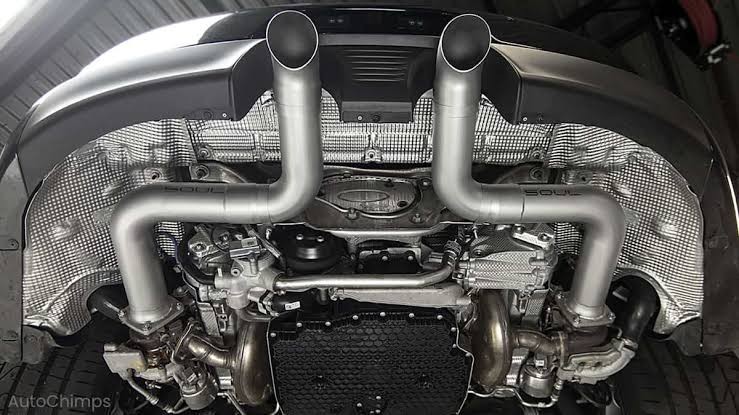A car's exhaust system consists of several components that work together to control emissions, reduce noise, and improve fuel efficiency. The main components of a typical exhaust system include:
1. Exhaust Manifold: The exhaust manifold collects exhaust gases from each cylinder of the engine and directs them into a single pipe. It is usually made of cast iron or stainless steel and is mounted directly to the engine's cylinder head.
2. Catalytic Converter: The catalytic converter is a crucial component that helps reduce harmful emissions. It contains catalysts (usually platinum, palladium, and rhodium) that facilitate chemical reactions to convert harmful gases like carbon monoxide, nitrogen oxides, and unburned hydrocarbons into less harmful substances such as carbon dioxide, nitrogen, and water vapor.
3. Oxygen Sensor: The oxygen sensor, also known as the O2 sensor, monitors the oxygen content in the exhaust gases. It provides feedback to the engine control unit (ECU) to optimize the air-fuel mixture. This information helps the engine run more efficiently and reduce fuel consumption.
4. Exhaust Pipes: These pipes carry the exhaust gases from the manifold to the catalytic converter and then to the muffler and tailpipe. They are designed to minimize restrictions and allow smooth flow of exhaust gases.
5. Muffler: The muffler, or silencer, reduces the noise produced by the exhaust gases. It contains chambers and baffles that create sound waves that cancel out or dampen the noise. While the muffler's primary function is noise reduction, it can also affect exhaust flow to some extent.
6. Resonator: Some exhaust systems may include a resonator, which further reduces noise by creating sound wave interference. It helps to eliminate specific frequencies that can cause unpleasant exhaust sounds.
7. Exhaust Tips: The exhaust tips are the visible part of the exhaust system at the rear of the vehicle. They serve mainly an aesthetic purpose, giving the exhaust system a finished and customized look.
The exhaust system plays a vital role in improving fuel efficiency in cars through several mechanisms:
1. Backpressure Reduction: An efficiently designed exhaust system minimizes backpressure, which is the resistance to the flow of exhaust gases. Reduced backpressure allows the engine to expel exhaust gases more easily, improving the engine's overall efficiency and power output.
2. Emissions Control: The catalytic converter and oxygen sensor work together to reduce harmful emissions by converting pollutants into less harmful substances. By efficiently controlling emissions, the exhaust system ensures the engine runs cleaner and adheres to environmental regulations.
3. Optimal Air-Fuel Mixture: The oxygen sensor provides feedback to the ECU about the oxygen content in the exhaust gases. This information allows the ECU to adjust the air-fuel mixture in real-time, ensuring the engine operates at its peak efficiency and minimizing fuel wastage.
4. Noise Reduction: While not directly related to fuel efficiency, the muffler and resonator help reduce noise, which contributes to a more comfortable driving experience.
Overall, a well-designed and properly functioning exhaust system plays a significant role in improving fuel efficiency by reducing backpressure, controlling emissions, optimizing the air-fuel mixture, and enhancing the overall performance of the engine.

Comments (0)
Please login to join the discussion
Be the first to comment on this article!
Share your thoughts and start the discussion